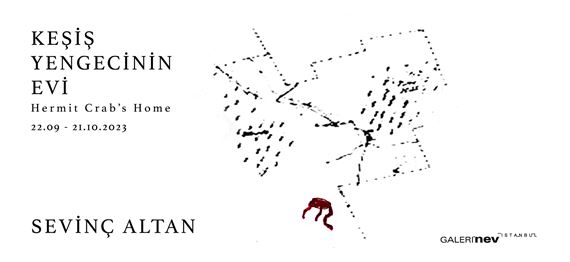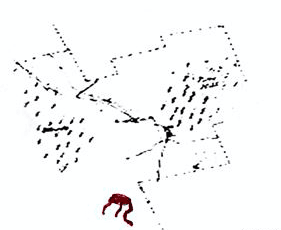
Hermit Crab’s Home
22 September - 21 October
Sevinç Altan’s first solo show at Galeri Nev İstanbul, Hermit Crab’s Home is on view between September 22 and October 21, 2023. Inspired by a hermit crab drawing made by Can, the younger brother of İsmail who is a waste paper collector, the show revolves around themes such as home, belonging, immigration-migration, war and borders.
Sevinç Altan’s dialogue and collaboration with 4-5 years old Can started when they met while Can was painting on waste papers and notebooks in the paper collection cart. The hermit crab in Altan’s paintings in the show belongs to Can, who was fascinated by his older brother’s narration of the story of these crabs like a fairy tale. Since they cannot produce shells, hermit crabs settle in empty shells for protection and when they grow up and their shells become too small, they seek another one. This is when they are at their weakest; their soft, bare bellies make them easy prey. When they die, a chemical signal they emit announces to others that the shell is empty, and the shell left by one becomes a home for the next. The crabs, who are in constant search with their temporary homes on their backs, and Can, who looks like a hermit crab to Altan while sitting among the cartons in the waste cart, constitute the starting point of the exhibition. The artist, who has lost track of Can for some time and has been searching for him, hopes that he has now grown a little bigger and found ‘a shell for his size.’
Altan considers migration as a phenomenon that points to the crisis of national-colonial privileges, calls into question the constants of modernity and invites societies to reflect on their own identities. While reminding us of nomadism as a way of deconstruction and reconstruction, a state of thinking and acting, and a process of creating a world, she sees it as an opportunity to rethink our ways of imagination, categories, ethical and political attitudes. In this exhibition, she creates a world that includes the paintings she and Can have made together, based on the question; “How can homes, spaces and other life practices be built that are not everyone’s and no one’s?” From the encounter with Can and the language of simplicity and contentment stemming from the shared experience give rise to a sense of an unfinished, incomplete space, as if constantly evolving and transforming during the construction process.
“The simple rectangular house we used to draw in our childhood with a door, two windows, and a roof, is no longer there, and neither is the tree next to it. It’s as if the house, along with its inhabitants, has turned into a product of mass production item or a complex design problem with various images of consumption. But the migrant children continue to draw that house. And the hermit crabs continue their journey towards their new shells."*
*From a talk with Sevinç Altan.

General Info